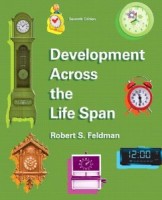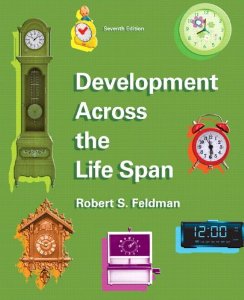 Author: Robert S. Feldman, PhD
Author: Robert S. Feldman, PhD
Publisher: Pearson (www.pearsonhighered.com) – 700 pages
Book Review by: Sonu Chandiram
This is a good book on human development, particularly in the physical, cognitive, and social/ personality aspects of that development. It explores how these aspects of ourselves change as we grow through our:
- Prenatal period (conception to birth)
- Infancy and toddlerhood (birth to 3 years),
- Preschool period (3 to 6 years)
- Middle childhood (6 to 12 years)
- Adolescence (12 to 20 years)
- Young Adulthood (20 to 40 years)
- Middle Adulthood (40 to 65 years
- Late Adulthood (65 years to death)
As the author Robert S. Feldman takes us through the different periods of human life and discusses what changes occur in each period in different aspects of our development – physical, cognitive, social / personality development, he also refers to the research and writings of four notable psychologists: Jean Piaget, Erik Erikson, Sigmund Freud, and Lawrence Kohlberg.
A compact visual form of what is covered in this book is provided for you the student, in two-page spreads on the inside front cover to first page; and the inside back cover to last page. These four pages are, taken together, sort of a snapshot of this book.
But if you want to get details, the Brief Contents (page iii) provides you not just the titles of the nine Parts of this book, but also those of its 19 chapters, as well as the topics covered in each of those chapters.
Organization of material in this book is very good, particularly within its chapters. Taking a look at chapter 1 – An Introduction to Lifespan Development – for example, you will see exactly what to expect in the ensuing pages.
On the top left in a two-column spread is a Chapter Overview. On the third column on the top is a list of questions under the heading Learning Objectives. The questions, numbered LO 1-1 through LO 1-7, are explored and discussed in this chapter, using mainly text, but also charts, definitions of key words in the margins of the pages, photos, tables, and other visuals.
A feature entitled Research Methods is provided at the beginning of exploring and discussing each question or a couple of the them; and a Review and Apply feature box provided at the end of exploring each question or a couple of them helps the student retain information he or she has read.
In the lower half of that first page of the chapter is Prologue: New Conceptions. The second page of that first chapter is a personal spotlight feature entitled Looking Ahead. In this space is a focus on Louis Brown, who was conceived from a test tube. Her life has followed a pattern that is quite “predictable,” the author writes. He explains that the specifics of our development vary, but “the broad strokes of the development however, which were set in motion in that test tube 28 years ago are remarkably similar for all of us.”
The Looking Ahead feature found in every chapter is a sort of spotlight on and case history of an individual that helps you see a real-life example of what might be construed as an abstract term.
At the end of the first chapter (and all chapters) is a feature called Looking Back that answers succinctly the questions laid out in the Learning Objectives box on the top right of the first page of each chapter.
You will also find at the end of all chapters, Key Terms and Concepts and an Epilogue. All these are designed to help you test your remembrance of what you learned.
This is a book, unlike other books, that speaks to all of us personally, about our lives, our hopes and dreams, and our challenges and objectives. It helps us understand ourselves better, as we read what others undergo in different stages of their lives in various aspects of their lives – the physical, cognitive, personality and social.
You will find that some of your experiences have been unique but many are the same that others have encountered. We are indeed social beings because much of what we have gone through life is common with others, as you will discover in this unique textbook. It truly gives us insight on what, why and how we think the way we think, and the way we do the things we do.
The fascinating science of psychology indeed provides structure to our thinking and behavior, and this book, thanks to the broad knowledge and expert writing of the author Robert S. Feldman, comes very close to linking our humanity (and our shortcomings and superior abilities) with the scientific understanding of ourselves, so far. It also makes us realize that that understanding has been, is, and will always be a work-in-progress!
Author
Robert S. Feldman, PhD is Professor of Psychology and Dean of the College of Social and Behavioral Sciences at the University of Massachusetts, Amherst. He is a recipient of the College Distinguished Teacher Award. He teaches psychology ranging in size from 15 to 500 students. Over the course of more than two decades as college instructor, he has taught undergraduate and graduate courses at Mount Holyoke College, Virginia University, and Wesleyan University, in addition to the University of Massachusetts. He received his B.A. with High Honors from Wesleyan University (from which he received the Distinguished Alumni Award). He has an MS and PhD from the University of Wisconsin-Madison. He is a winner of the Fulbright Senior Research Scholar and Lecturer award, and has written more than 100 books, book chapters and scientific articles.







